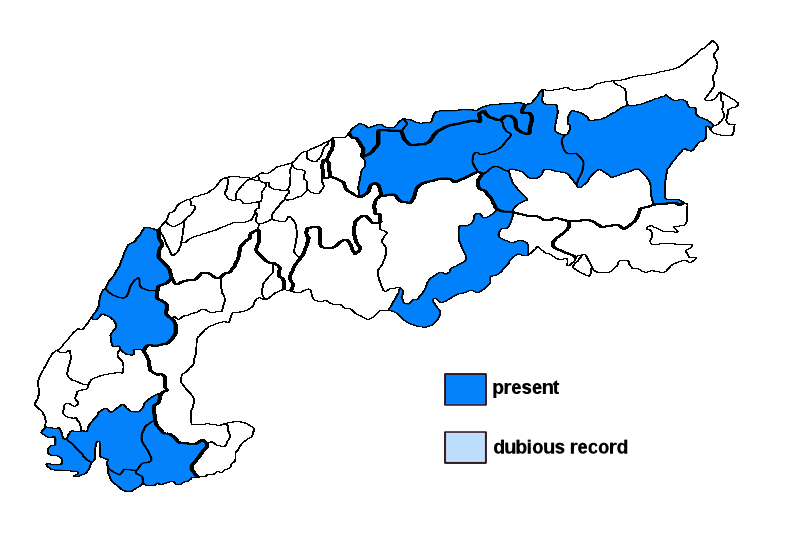Arthonia trifurcata (Hepp ex Müll. Arg.) Cl. Roux
Syn.: Opegrapha trifurcata Hepp ex Müll. Arg.
Lichenised.
Substrate: calciferous rocks
Altitudinal range: from the submediterranean/colline belt (potential vegetation: mixed deciduous forests dominated by Quercus and Carpinus) to the subalpine belt (potential vegetation: open, taiga-like forests dominated by Larix decidua and/or Pinus cembra and Rhododendron)
Note: this species has been often confused with A. calcarea, so that its distribution is still poorly known. The thallus is thinner and greenish-white and the apothecia are smaller than in A. calcarea, which also has a different ecology, being a littoral species; the arthonioid asci and similarities with A. atra were interestingly already noticed by Müller Argoviensis; the type is from the Jura Massif in France. It grows on calcareous rocks in rather sheltered situations below the montane belt, and sometimes it starts the life-cycle on other crustose lichens.
Austria: Tirol; Salzburg; Steiermark; Germany: Oberbayern; Schwaben; France: Alpes-de-Haute-Provence; Alpes-Maritimes; Savoie; Haute-Savoie; Vaucluse; Var; Italy: Veneto;





